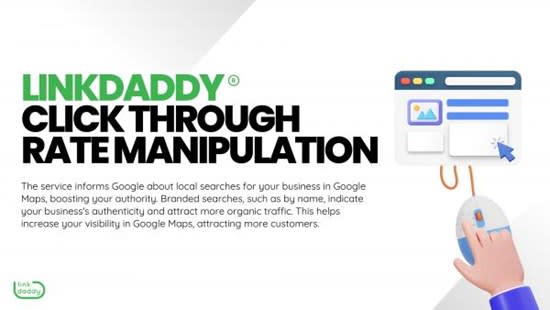Optimize Your Click-Through Rates Making Use Of Advanced CTR Manipulation Techniques
Wiki Article
Enhance User Engagement With Precision CTR Control Strategies
In the world of digital advertising, the tactical application of precision click-through price (CTR) manipulation methods has come to be a cornerstone for enhancing user interaction. By understanding the art of recording individual focus via customized approaches, marketing professionals hold the trick to opening untapped capacity in driving communications and conversions. As we discover the ins and outs of enhancing CTR, a world of data-driven insights and finely tuned methods awaits those who look for to elevate their electronic existence. The trip in the direction of mastering these strategies promises a realm of possibilities for those eager to welcome the subtleties of customer interaction enhancement.Comprehending CTR Adjustment Fundamentals
In exploring the world of user interaction through Click-Through Rate (CTR) control methods, it is extremely important to very first establish a solid understanding of the fundamentals that underpin this technique. CTR manipulation entails strategically affecting the number of clicks an online communication obtains, generally through attracting visuals, persuasive copy, and calculated positioning of elements - CTR Manipulation Service. Comprehending the fundamentals of CTR control is important for online marketers and internet programmers aiming to increase individual interaction efficientlyKey basics of CTR manipulation include assessing target audience actions, evaluating various approaches to establish what reverberates best, and optimizing elements based on data-driven understandings. In addition, factors such as the significance of web content, quality of messaging, and convenience of navigation play important roles in driving customer interaction via CTR control techniques.
Crafting Engaging Call-to-Actions
Crafting compelling call-to-actions is a pivotal element of improving customer involvement and driving desired activities on digital platforms. A call-to-action (CTA) is a timely that urges users to take a certain activity, such as enrolling in an e-newsletter, buying, or clicking on a link. To develop reliable CTAs, it is vital to be clear, concise, and persuasive.When crafting CTAs, emphasis on making use of solid activity verbs that clearly convey what the user needs to do next. Furthermore, it is vital to create a feeling of urgency to prompt immediate action. Utilizing words like "now" or "limited time offer" can aid motivate individuals to act swiftly.
Additionally, CTAs need to be visually enticing and stand apart on the web page to grab the customer's interest. Integrating contrasting colors, vibrant typefaces, and critical placement can help attract the user's eye to the CTA.
Applying A/B Examining Methods
When enhancing user involvement and conversion rates on digital platforms, implementing A/B testing techniques becomes a vital tool for evaluating the effectiveness of various components. A/B screening includes comparing two variations of a web page, email, or other electronic web content to establish which one does better in terms of customer involvement and conversions - CTR Manipulation. By randomly revealing different versions to customers and assessing the resulting data, companies can make data-driven decisions to optimize their content for greater click-through prices (CTRs) and boosted individual engagementTo execute A/B testing effectively, organizations should start by identifying the details components they want to examine, such as headlines, images, or call-to-action switches. Next, they see here now require to create the various versions to be examined and established a system for monitoring and examining the outcomes. By running these examinations continuously and making data-backed changes, services can refine their electronic content to far better resonate with their target market and drive higher involvement levels. A durable A/B testing approach can result in significant renovations in CTRs and total individual engagement, eventually increasing conversion prices and driving company development.
Leveraging Dynamic Web Content Optimization
Utilizing dynamic content optimization plays a critical function in boosting customer involvement and driving conversions within electronic systems. By customizing web content to specific customer choices and behaviors in real-time, vibrant content optimization ensures that users are presented with personalized and relevant information. This level of customization considerably improves individual interaction by catching interest and encouraging interaction.Dynamic material optimization enables for seamless integration of interactive aspects, such as videos, quizzes, or product suggestions, based on user interactions and journey stage - CTR Manipulation Service. This not only boosts customer experience yet likewise enhances the possibility of conversions by presenting customers with web content that reverberates with their requirements and rate of interests

Monitoring and Evaluating CTR Performance
Efficient surveillance and analyzing of Click-Through Rate (CTR) performance is crucial for examining the success of electronic marketing projects. By tracking CTR metrics, online marketers can obtain useful understandings right into the performance of their methods and material.To keep an eye on CTR effectively, marketing professionals can utilize numerous devices and platforms that offer comprehensive analytics and reporting capabilities. These devices can track CTR for different channels, projects, and audience sectors, giving a detailed sight of involvement levels. By analyzing CTR data, marketing professionals can identify high-performing content, target details audience sectors better, and allot sources effectively to maximize involvement and conversions.

Verdict
To conclude, the critical implementation of accuracy CTR adjustment strategies is essential for official source boosting customer interaction and driving higher communication rates. By understanding target audience habits, crafting engaging call-to-actions, executing A/B screening approaches, leveraging dynamic material optimization, and monitoring CTR performance, online marketers can produce a more inviting customer experience that considerably improves conversion rates. This data-driven approach guarantees that material reverberates with users, causing enhanced interaction and ultimately, greater success in electronic advertising initiatives.In the realm of digital advertising, the calculated application of precision click-through rate (CTR) over at this website manipulation strategies has become a keystone for boosting user engagement.In exploring the world of individual interaction via Click-Through Price (CTR) adjustment methods, it is extremely important to initial develop a solid understanding of the fundamentals that underpin this technique. By arbitrarily revealing various variations to customers and analyzing the resulting data, organizations can make data-driven decisions to optimize their web content for greater click-through rates (CTRs) and improved individual engagement.
By customizing material to individual user preferences and habits in real-time, dynamic web content optimization makes sure that users are provided with customized and relevant info.In final thought, the critical application of precision CTR manipulation techniques is essential for boosting customer interaction and driving greater communication rates.
Report this wiki page